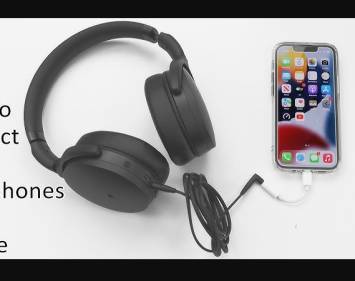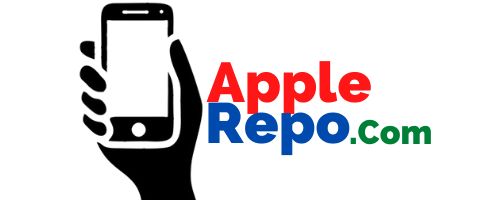Rediscovering Connection: Complete Wired Headphones for iPhone Guide and Compatibility Solutions
The pendulum of audio preference has swung dramatically, with wired headphones experiencing an unexpected renaissance among users seeking reliability, superior sound quality, and freedom from battery anxiety. Wired headphones for iPhone have reemerged as practical solutions despite Apple’s controversial decision to eliminate the 3.5mm headphone jack in 2016, creating a market for Lightning, USB-C, and adapter-based audio solutions that satisfy diverse user needs.

Counter to predictions that wireless would completely dominate the market, wired earphones still command an impressive 34% share of the global earbud market in 2025, demonstrating enduring demand for cable-connected audio solutions. This persistence stems from tangible advantages including zero latency, consistent performance, lossless audio transmission, and elimination of charging requirements that wireless alternatives cannot match regardless of technological advancement.
This comprehensive exploration examines wired headphone compatibility with modern iPhones, identifies the best options across various price points, troubleshoots common connection issues, and explores the cultural phenomenon driving Generation Z’s surprising embrace of what many dismissed as obsolete technology.
Can You Still Use Wired Headphones with an iPhone?
Yes, you can absolutely use wired headphones with modern iPhones, though the method depends on your specific iPhone model and headphone connector type. Apple eliminated the 3.5mm headphone jack starting with iPhone 7 in 2016, requiring users to adopt Lightning connector headphones, USB-C options (iPhone 15 and newer), or utilize adapters for traditional 3.5mm headphones.
iPhone 7 through iPhone 14 models require Lightning connections for direct wired audio, either through headphones with integrated Lightning connectors like Apple EarPods with Lightning, or via Apple’s Lightning to 3.5mm headphone adapter that enables standard headphone compatibility. The adapter costs $9 and provides reliable audio transmission while maintaining inline microphone and remote control functionality.
iPhone 15 and newer models switched to USB-C connectors, aligning with European Union regulations and broader industry standardization. This transition opens compatibility with the vast universe of USB-C headphones and enables use of generic USB-C to 3.5mm adapters, expanding options beyond Apple’s proprietary ecosystem.
Adapter quality significantly impacts audio experience, with Apple’s official adapters generally providing superior digital-to-analog conversion compared to cheap third-party alternatives. Audiophile users may invest in premium portable DACs (digital-to-analog converters) like FiiO i1 or Chord Mojo that dramatically enhance audio quality beyond basic adapter capabilities.
What Are the Best Wired Earphones for iPhone?
Apple EarPods remain the benchmark for iPhone-optimized wired listening, available in Lightning, USB-C, and traditional 3.5mm variants depending on device compatibility. The iconic design delivers balanced sound quality, reliable microphone performance, and seamless integration with iOS features including Siri activation and audio controls.
Shure AONIC 215 represents premium wired audio for discerning listeners, featuring detachable cables with Lightning or USB-C connectivity options. The professional-grade sound signature, exceptional isolation, and durable construction justify the premium pricing for users prioritizing audio fidelity above all else.
JBL Tune 310C delivers exceptional value with USB-C connectivity, 9mm dynamic drivers providing signature Pure Bass sound, and integrated microphone for calls. The lightweight design and affordable pricing make it ideal for users seeking quality wired audio without premium investment.
Sennheiser IE 200 offers audiophile-grade performance with detachable cables supporting Lightning and USB-C connectivity. The 7mm transducers deliver remarkably detailed sound across the frequency spectrum, appealing to music enthusiasts who demand professional monitoring quality.
Bose QuietComfort 20 provides active noise cancellation in wired earbud format, though requiring adapters for modern iPhones. The superior noise rejection makes them valuable for travel and commuting scenarios where wireless alternatives might suffer interference or battery limitations.
Why Won’t Wired Headphones Work on iPhone?
Connector incompatibility represents the most common reason wired headphones fail with iPhones. Standard 3.5mm headphones require adapters for iPhones lacking headphone jacks, while attempting to use Lightning headphones with USB-C iPhones (or vice versa) obviously won’t work without proper adapters.
TRRS versus TRS plug configurations affect adapter compatibility, with iPhone requiring TRRS (Tip-Ring-Ring-Sleeve) plugs that include microphone functionality. Some camera-oriented microphones and professional audio equipment use TRS plugs lacking the additional ring for microphone signals, requiring specialized adapters for proper iPhone compatibility.
Dirty or corroded Lightning/USB-C ports prevent proper electrical connection between headphones and iPhones. Regular port cleaning using compressed air and soft brushes removes pocket lint, dust accumulation, and debris that blocks connector pins from making proper contact.
Software issues occasionally prevent audio routing to wired headphones, particularly after iOS updates or when Bluetooth headphones were previously connected. Restarting your iPhone, toggling Airplane Mode, or checking audio output settings in Control Center often resolves mysterious headphone detection failures.
Adapter quality problems with cheap third-party adapters cause intermittent connections, audio quality degradation, or complete failure. Investing in Apple’s official adapters or certified MFi (Made for iPhone) alternatives ensures compatibility and reliability.
Why Does Gen Z Like Wired Headphones?
The aesthetic revival of Y2K fashion has made wired headphones fashionable accessories rather than obsolete technology, with Gen Z embracing the visible cable as intentional style statement. This demographic views wired headphones as charmingly retro, similar to how film cameras and vinyl records experienced cultural resurgence.
Anxiety around device tracking and surveillance makes some Gen Z users prefer wired connections that eliminate Bluetooth signals potentially used for location tracking. While largely based on perception rather than actual privacy threats, this concern drives preference for physical connections perceived as more secure.
Battery anxiety resonates strongly with younger users who’ve experienced multiple device failures from depleted batteries. Wired headphones eliminate one more thing requiring charging, appealing to those seeking simplicity and reliability in increasingly complex digital lives.
Sound quality appreciation among Gen Z music enthusiasts who recognize that wired connections provide lossless audio without Bluetooth compression artifacts. As streaming services offer higher quality audio tiers, younger listeners increasingly notice quality differences between wired and wireless playback.
Anti-consumerism sentiments drive rejection of wireless headphones requiring frequent replacement due to non-replaceable batteries. Wired alternatives offer indefinite lifespans (barring cable damage), aligning with sustainability values increasingly important to younger generations.
EarPods iPhone: Apple’s Iconic Wired Solution
Apple EarPods evolved through multiple generations, from the original round design to the current distinctive shape engineered to fit diverse ear anatomies. The Lightning and USB-C variants provide direct digital connection, while the 3.5mm version requires adapters for modern iPhones.
The acoustic engineering behind EarPods prioritizes balanced sound across frequencies rather than bass-heavy profiles popular in consumer headphones. Apple optimizes frequency response for accurate reproduction of various content types from podcasts to music to video calls.
Build quality and comfort receive mixed reviews, with the hard plastic design fitting some users perfectly while causing discomfort for others. The non-silicone design allows ambient sound awareness, beneficial for safety but compromising isolation in noisy environments.
Integration with iOS enables seamless control through inline remote supporting volume adjustment, playback control, Siri activation, and call answering. The microphone quality exceeds most competitors in the price range, making EarPods excellent for voice calls and recording.
Headphone iPhone: Connection Options Explained
Lightning connector headphones work exclusively with iPhone 5 through iPhone 14 models, providing digital audio signal that bypasses iPhone’s internal digital-to-analog converter. This direct digital connection potentially offers superior audio quality compared to analog connections.
USB-C headphones became relevant with iPhone 15 introduction, offering universal compatibility with modern Android devices, iPads, and MacBooks. The standardization finally enables cross-platform headphone compatibility after years of Apple’s proprietary Lightning connector.
3.5mm headphones via adapter remain viable for users preferring traditional headphones or owning high-quality audiophile headphones worth adapting to iPhone use. Quality adapters maintain audio fidelity while enabling continued use of legacy headphone collections.
Headset iPhone Bluetooth: Wireless Alternatives
Bluetooth headsets represent the alternative Apple promotes through AirPods and Beats product lines. While not technically wired, understanding wireless options helps users make informed choices between connection methods.
AirPods Pro 2 deliver the most seamless iPhone integration with H2 chip enabling instant pairing, spatial audio, and adaptive audio features. The premium pricing reflects advanced features including active noise cancellation and computational audio processing.
Third-party Bluetooth options like Sony WF-1000XM5 or Bose QuietComfort Ultra provide competitive or superior sound quality and noise cancellation, though lacking the deep iOS integration of Apple products. These often prove better values for users also using Android devices.
Headset iPhone Ori iBox: Original Apple Accessories
Original Apple accessories purchased through authorized retailers like iBox ensure authenticity and warranty coverage. Counterfeit EarPods flood the market with inferior build quality and audio performance despite visual similarity to genuine products.
Verification of authenticity involves checking packaging details, serial numbers, and build quality characteristics that distinguish genuine Apple products from convincing fakes. Authorized retailers provide purchase confidence unavailable from marketplace sellers.
Warranty coverage through Apple or authorized resellers protects against manufacturing defects and ensures access to genuine replacement parts. This support justifies premium pricing compared to uncertified alternatives.
Headset iPhone Kabel: Cable Durability Considerations
Cable construction quality dramatically affects wired headphone longevity, with reinforced strain reliefs preventing common failure points near connectors. Premium headphones often feature detachable cables enabling replacement without discarding entire headphones.
Proper cable management extends headphone life through careful storage avoiding tight coils, protecting from crushing in bags, and keeping connectors clean. Using cable organizers or cases prevents tangling and stress damage.
Replacement cable availability matters for detachable cable designs, with some manufacturers offering multiple cable types (Lightning, USB-C, 3.5mm) enabling adaptation as you upgrade iPhones. This flexibility provides longevity impossible with permanently attached cables.
Future of Wired Audio on iPhone
USB-C standardization promises improved wired audio future for iPhone users, with broader headphone compatibility and potential for higher resolution audio support. The universal connector finally enables seamless cross-platform headphone use.
Apple’s commitment to wired audio remains unclear, with no indications of headphone jack return but continued EarPods production suggesting recognition of wired demand. The company likely continues supporting both connection methods indefinitely.
Audiophile market growth drives development of premium Lightning and USB-C headphones from traditional audio brands, expanding options beyond budget alternatives. This trend benefits iPhone users seeking high-fidelity wired listening experiences.
Choosing Between Wired and Wireless
Wired headphones for iPhone remain completely viable in 2025 despite Apple’s push toward wireless audio dominance. The practical advantages of wired connections—zero latency, consistent quality, no charging requirements—ensure continued relevance for users prioritizing reliability and audio fidelity over wireless convenience.
Understanding compatibility requirements, adapter options, and available headphone choices empowers iPhone users to make informed decisions aligning with personal priorities. Whether embracing EarPods for simplicity, investing in audiophile-grade wired headphones, or maintaining traditional 3.5mm favorites through adapters, multiple paths exist for satisfying wired audio on modern iPhones.
The unexpected renaissance of wired headphones among younger generations demonstrates that technological progress doesn’t always mean abandoning proven solutions. As battery anxiety, sustainability concerns, and audio quality appreciation drive renewed interest in cable connections, the future of wired iPhone audio appears surprisingly bright despite predictions of obsolescence.

Editor-in-chief in charge of reviewing an article before it is published on applerepo.com
